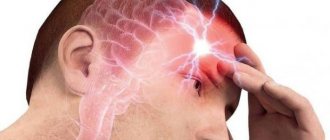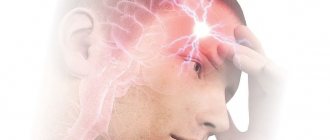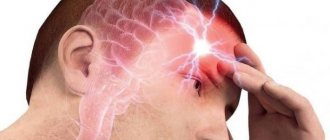The nervous system has a structure consisting of somatic and autonomic components. The first is responsible for motor reactions that arise under the influence of external factors. The vegetative part is involved in the work of internal organs, blood vessels and glands, which is described in scientific articles about VSD and the websites of clinics licensed to treat it.
The autonomic system is usually divided into sympathetic and parasympathetic fragments. The first part is responsible for increasing activity and stimulating metabolism. This leads to increased tissue excitability. The parasympathetic system restores the body and regulates its functions during sleep.
They are distinguished by synchronous recovery. However, under the influence of external conditions, a dominant is formed, and a predominance of a certain department is observed. Mental adaptation is disrupted, the emotional state suffers.
Vegetovascular dystonia (VSD) is a combination of manifestations that appear when there are interruptions in the functioning of the autonomic part of the nervous system. The disease causes various abnormalities in the functioning of internal organs.
This syndrome has different names - neurocirculatory dystonia, autonomic dysregulation, autonomic neurosis, neurasthenia.
general information
The term “vegetative-vascular dystonia” is currently not included in the International Classification of Diseases. Instead, the diagnosis “somatoform autonomic dysfunction of the nervous system” is used. In addition, a number of individual manifestations are classified as independent diseases. In our country, the old terminology is more often used.
The autonomic nervous system (ANS) is responsible for regulating the basic processes occurring inside the human body. Vital functions are under its control:
- breath;
- heart rate;
- tone of blood vessels and hollow organs;
- secretion of saliva, sweat, hormones;
- digestion of food;
- liver and kidney function, etc.
A person cannot control the functioning of the autonomic nervous system, which is why it is also called the autonomic nervous system. The functioning of various departments is regulated by a complex feedback system and also depends on the level of hormones. Failures in this mechanism lead to disruptions in the functioning of internal organs.
Make an appointment
Sudden vegetative-vascular attack
The so-called “vegetative-vascular crises”, which in practice occur like panic attacks, deserve special attention. The sudden onset of feelings of fear and anxiety is accompanied by severe somatic symptoms (palpitations, inability to breathe). They are extremely difficult for patients to tolerate and lead to complete social maladjustment. Moreover, a person is constantly in painful anticipation of a second attack.
In some patients, the attack appears suddenly. Others note a clear relationship with potentially threatening or stressful situations. This could be being in society, a cramped room or space, exciting news, etc.
In addition to severe anxiety and fear, the patient experiences palpitations, a lump in the throat, a feeling of lack of air and the inability to breathe. Choking, dizziness, increased heart rate, as well as disorientation in space and time lead to a feeling of fear of death. A panic attack often causes an ambulance to be called.
Causes
Malfunctions of the ANS can be caused by various diseases and conditions. The list of the most common causes of vegetative-vascular dystonia includes:
- endocrine diseases (diabetes mellitus, hypo- or hyperfunction of the thyroid gland, etc.);
- significant hormonal changes in the body (during puberty, menopause or pregnancy);
- injuries to the brain or spinal cord (even one mild concussion can be enough to develop disruptions in the functioning of the nervous system);
- osteochondrosis of the cervical spine;
- encephalopathy of various origins;
- chronic diseases of the cardiovascular system, gastrointestinal tract;
- physical or mental fatigue;
- chronic lack of sleep;
- one-time severe stress or chronic tension of the nervous system;
- alcohol or drug abuse, smoking;
- mental illness;
- increased anxiety, hypochondria;
- use of certain medications (oral contraceptives, bronchodilators, medications based on caffeine and ephedrine);
- acute and chronic infections of the brain, kidneys, respiratory system;
- hereditary predisposition.
Changes in climate or time zones, and frequent business trips can also provoke the manifestation of VSD. Statistics show that women suffer from the disease three times more often than men. Adolescents are also at risk.
The child grows, and dystonia “grows”
In adolescence, dystonia can manifest itself in attacks. It is because of these attacks that adolescents are often plagued by increased sweating, redness of the skin, palpitations, dizziness, ringing in the ears, and headaches. Emotionally unstable and often anxious teenagers are most susceptible to such attacks. Often, a mature person leaves his complaints forever in a bygone childhood. But this doesn't happen to everyone. The vast majority of women suffer from attacks of dystonia to one degree or another. In adults, dystonia is more severe and painful. The frequency of attacks also increases, as the elderly body, burdened with chronic illnesses, generally becomes less controllable. If you turn pale and/or blush easily, you often experience dizziness, headaches, excessive sweating, rapid or slow heartbeat, difficulty breathing, sleep disturbances, cold and numb extremities, and at the same time you quickly get tired and feel “wrung out.” lemon,” there is a high probability that we are talking about vegetative dystonia.
Symptoms
The symptoms of vegetative-vascular dystonia are varied, since the ANS is responsible for the functioning of all organs and structures of the human body. All manifestations of the disease can be divided into several groups:
- respiratory (respiratory): rapid breathing, subjective feeling of lack of air, inability to take a deep breath, aggravated by stress;
- cardiac (cardiac): frequent or rare pulse, interruptions (feeling of freezing) in the work of the heart, pain and a feeling of squeezing in the sternum or in the left half of the chest;
- thermoregulatory: an increase in temperature not associated with any infectious disease or inflammatory process; usually goes away on its own;
- dysdynamic: a sharp increase or decrease in blood pressure, accompanied by corresponding symptoms: headache, dizziness, flashing spots before the eyes, fainting, etc.;
- psychoneurological: increased sensitivity to changes in atmospheric pressure and temperature (meteosensitivity), drowsiness during the day and insomnia at night, apathy, irritability, causeless anxiety, fatigue;
- gastrointestinal: constipation, diarrhea or their alternation, pain and heaviness in the stomach, heartburn, increased gas formation in the intestines;
- sexual: decreased sexual desire, lack of arousal, inability to achieve orgasm, impotence in men.
The disease can cause both individual symptoms and various combinations of them. This makes it much more difficult to diagnose.
Kinds
Depending on the predominant syndrome (complex of symptoms), vegetative-vascular dystonia is divided into the following types:
- hypertensive: accompanied by a short-term increase in blood pressure (within 140 mmHg), headache, rapid heartbeat;
- hypotonic: blood pressure is constantly low or decreases sporadically, which is often accompanied by severe dizziness, darkening of the eyes or fainting; patients also complain of excessive fatigue, frequent headaches and a feeling of aches throughout the body;
- cardiac: manifests itself as an increased, decreased or uneven pulse, chest pain, as well as attacks of shortness of breath, in which the patient experiences a strong feeling of lack of air;
- vagotonic: a person, first of all, complains of breathing problems: the inability to take a full breath, a feeling of tightness in the chest; the condition is accompanied by strong salivation;
- mixed: a combination of different symptoms or their alternation.
Depending on the severity, there are three types of VSD:
- mild: a person experiences symptoms rarely, they do not disrupt his lifestyle or reduce his ability to work; there are no crises;
- moderate severity: symptoms are clearly expressed and interfere with normal life activities; periodically a person may experience crises during which his ability to work decreases;
- severe: manifestations of the disease are observed almost constantly, the person cannot work normally, and is often on sick leave; vegetative crises are repeated very often.
Manifestations
VSD is characterized by many different manifestations. Almost all body systems are affected.
- Cardiovascular. Heart rate and blood pressure change, cardiac-type pain and changes in the ECG are noted.
- Pulmonary. There is a feeling of lack of air, inhalation is impaired, blood oxygen saturation deteriorates, and paresthesia appears.
- Nervous. Worrying headaches, tinnitus, weakness, dizziness, fainting. Thinking slows down. I am tormented by fluctuations in body temperature, hyperkinesis, and episodes of depressive mood.
Table 3. Action of the sympathetic and parasympathetic systems
| Sympathetic | Parasympathetic | |
| Pupil | Extension | Narrowing |
| Salivation | Insufficient | Excessive |
| Pulse | Increased frequency | Reduction |
| Arterial pressure | Promotion | Demotion |
| Bronchial lumen | Extension | Narrowing |
| Gastric juice | Decreased secretion | Increased secretion |
| Intestinal peristalsis | Reduced | Reinforced |
| Leather | Pale | Blushed |
| Sweating | Decreased | Increased |
Complications
The most common complication of VSD is vegetative crisis. This is a sudden attack during which a massive disruption of the autonomic nervous system occurs. Depending on the type of violation, there are three types of crises.
- Sympathoadrenal. Accompanied by a massive release of adrenaline into the blood, an increase in blood pressure, pulse and body temperature. The skin turns pale, hands and feet become cold and numb. The person experiences severe chills, unexplained anxiety, and fear of death. The condition is also often called a panic attack.
- Vagoinsular. The patient feels hot and suffocated, his face turns red, and severe sweating appears. Blood pressure decreases, pulse becomes rare. Often the condition is accompanied by frequent loose stools.
- Mixed. The crisis manifests itself with mixed symptoms.
If the symptoms of VSD are ignored for a long time and there is no treatment, the pathology can cause the development of:
- persistent arterial hypertension, poorly corrected by medications;
- cardiomyopathy;
- diabetes mellitus type 2;
- cholelithiasis or urolithiasis;
- stroke;
- myocardial infarction.
Excessive excitability of the autonomic nervous system also causes a decrease in immunity.
Panic attacks with VSD
VSD and panic attacks are considered completely different conditions. Many patients confuse these diseases because they differ in other similar symptoms. During an attack of dystonia and at the time of a panic attack, a release of adrenaline, norepinephrine, and acetylcholine occurs (observed in the sympathetic form). Therefore, many experts diagnose people with a tendency to panic attacks as VSD.
This conclusion is considered erroneous. To eliminate vegetative-vascular dystonia, it is necessary to take medications, and the treatment of panic attacks is carried out using psychotherapy methods.
It is easy to confuse VSD and a panic attack. Experts in the post-Soviet space practically do not diagnose panic attacks. They are treating the disease. To eliminate the symptoms of panic attacks, you do not need to take medications.
To stabilize blood pressure parameters, to combat headaches and pathologies in the heart area, the help of a psychotherapist is needed. This deviation is a neurosis. Vegetative vascular dystonia is considered a deviation of the autonomic nervous system. This condition requires the use of medications.
Diagnostics
Diagnosis of vegetative-vascular dystonia requires, first of all, the exclusion of another, more serious pathology with similar symptoms. The examination includes:
- interviewing the patient, collecting anamnesis to identify specific complaints, their strength, circumstances of occurrence, etc.; hereditary factors and previous diseases are also taken into account;
- examination: breathing and pulse rates are checked, an orthostatic test is performed (measurement of the heart rate first while lying down, and then 1-2 minutes after moving to a vertical position), dermographism is assessed (the color of the strip on the skin after holding the handle of a neurological hammer, indicating the activity of the or another part of the autonomic nervous system);
- laboratory diagnostics: general and biochemical blood tests, assessment of hormone levels, indicators of inflammation and autoimmune processes);
- ECG and ultrasound of the heart to exclude cardiac pathology;
- chest X-ray and respiratory function testing (spirometry), to exclude diseases of the respiratory system;
- rheoencephalography: assessment of the tone of cerebral vessels, the elasticity of their walls;
- Doppler ultrasound of the vessels of the neck and brain to assess the quality of blood flow in them;
- X-ray of the sella turcica, MRI of the brain to exclude tumors and other pathologies;
- electroencephalography (EEG): evaluates bioelectrical impulses in the brain and helps exclude epilepsy.
The patient must be examined by a therapist, neurologist and cardiologist. If necessary, consultations with other specialists are added, for example, a gynecologist, gastroenterologist, endocrinologist, psychiatrist.
Make an appointment
What is VSD
The autonomic nervous system, also called the autonomic nervous system, is part of the nervous system of the human body. It is responsible for controlling the activity of internal organs, metabolic processes occurring in the body, the functioning of blood and lymphatic vessels, as well as the activity of the endocrine glands. Thus, the autonomic nervous system plays an important role in maintaining homeostasis (constancy of the internal environment) and adaptation to changing environmental conditions.
The autonomic nervous system is responsible for the innervation of the entire body, organs and tissues. Moreover, its work is in no way subordinate to the will of a person, but is controlled independently of desires by the cerebral cortex. That is, a person cannot voluntarily stop the heart or influence the speed of intestinal peristalsis.
Autonomic nerve centers are also located in the brain stem, hypothalamus and spinal cord. Therefore, any disturbances in these organs are directly reflected in the quality of functioning of the autonomic nervous system, and can lead to the development of autonomic disorders.
Thus, all vital processes of the body are under the control of the autonomic nervous system, namely:
- heart rate;
- blood pressure level;
- thermoregulation;
- activity of salivary, sweat, endocrine glands;
- frequency and depth of breathing;
- digestion of food and intestinal motility;
- the condition of the smooth muscles of internal organs and the walls of blood vessels;
- processes of growth and reproduction;
- metabolic processes;
- urination, etc.
Anatomically and functionally, the autonomic nervous system is divided into 3 sections:
- Sympathetic - responsible for metabolism, energy consumption and mobilization of forces for active activity. Its sphere of influence includes heart function and blood pressure levels. Therefore, the sympathetic department allows the human body to prepare as much as possible for fight or active work.
- Parasympathetic - regulates the functioning of organs mainly during sleep and passive rest, and is responsible for restoring spent energy reserves. It is responsible for reducing heart rate, blood pressure and increasing peristalsis, which makes it possible to replenish energy reserves from food received.
- Metasympathetic - ensures communication between internal organs and the preservation of local autonomic reflexes.
All parts of the autonomic nervous system are in a certain relationship with each other, which ensures proper regulation of the body’s functioning. At the same time, the most important organs from the point of view of life support have double innervation with the opposite effect. But when the slightest deviation from the norm occurs, under the influence of stress, the balance between the sympathetic and parasympathetic departments is disrupted, which leads to the predominance of one of them over the other. The result of this is the development of vegetative-vascular dystonia.
Vegetative-vascular dystonia is a syndrome that combines various disorders of autonomic functions that are the result of impaired neurogenic regulation. This occurs when the balance between the activity of the sympathetic and parasympathetic parts of the autonomic nervous system is disturbed, which can be due to the action of a huge variety of the most disparate causes.
Thus, VSD is a multifactorial disorder that can be regarded as one of the symptoms of an existing neurological or somatic disease and consists of changes in the functioning of internal organs. Sometimes the root cause of the development of vegetative-vascular dystonia cannot be established.
Vegetative-vascular dystonia is often also called cardioneurosis, dysvegetosis, neurasthenia and some other terms.
Treatment
Treatment of vegetative-vascular dystonia requires an integrated approach. The doctor is required to minimize the number of attacks, reduce their strength and duration. A combination of several techniques is used:
- drug treatment;
- acupuncture, as the most effective for stabilizing the autonomic nervous system
- physiotherapy, exercise therapy, massage;
- Spa treatment;
- psychotherapy if necessary.
Drug treatment is aimed at stabilizing the functioning of the autonomic nervous system, improving blood circulation and metabolism. Depending on the clinical situation, the following may be prescribed:
- sedatives of varying strength from herbal to prescription: improve the quality of night's rest, reduce stress and anxiety;
- antidepressants: help eliminate excessive anxiety, irritability, apathy; help stabilize the heart, reduce headaches and muscle pain;
- tranquilizers: necessary for severe panic attacks, unreasonable fears, high anxiety;
- nootropic drugs: improve metabolism and blood circulation in neurons of the brain and spinal cord, increase resistance to stress;
- adrenergic blockers and other antihypertensive drugs: used symptomatically for increased blood pressure and rapid pulse;
- B vitamins: improve the conduction of nerve impulses and have a beneficial effect on the state of the nervous system.
Physiotherapeutic techniques help improve blood circulation and oxygen supply to tissues. Some procedures, on the contrary, have a relaxing effect and increase resistance to stress. The patient is prescribed:
- laser therapy;
- magnetic therapy;
- electrophoresis;
- electrosleep, etc.
If necessary, drug treatment and physiotherapy are supplemented with a general strengthening complex of physical therapy, massage, and acupuncture. Psychotherapy is aimed at reducing general anxiety, stabilizing the condition, and working through internal blocks and fears.
Sanatorium-resort treatment is used outside the period of exacerbation. Patients are prescribed general restorative procedures: mud therapy, mineral water baths, etc. It is necessary to choose resorts in a similar climatic zone so that the trip does not cause an exacerbation of the condition.
Fear is under control
Usually the doctor prescribes drugs that affect vascular tone, improve cerebral circulation, and reduce excitability. He can also recommend ultrasound, acupuncture, laser therapy, massage, oxygen and radon baths, and therapeutic showers. But all these means are worthless until a person himself learns to manage his fears. No wonder Theodore Roosevelt said that “fear is the only thing we have to fear.”
Therefore, specialists must supplement drug treatment with antidepressants and anti-anxiety drugs with psychotherapy sessions. The task of a psychiatrist is to pull out human fears, complexes and neuroses from the subconscious and teach them to manage them. Sometimes, in order to get rid of the painful symptoms of vegetative neurosis forever, it is enough to simply understand yourself and resolve your internal conflicts. In addition, it is very important for the patient to work on himself.
With VSD, it is extremely necessary to ensure healthy sleep, regular exercise (swimming and contrast showers are especially useful), and also give up alcohol and smoking. People are often afraid that another attack will lead to dangerous consequences: a stroke or heart attack. But this fear is groundless, since it has been experimentally proven that with a healthy heart, such attacks play the role of a kind of gymnastics for the heart muscle, something like jogging or exercising on a weight machine.
Prevention
Preventive measures for vegetative-vascular dystonia help increase the body's resistance to stress and strengthen the immune system. They are used not only to prevent the disease, but also as an addition to the main therapy. Doctors recommend:
- normalize the work and rest schedule, prevent overtime;
- eliminate psycho-emotional irritants as much as possible, ensure a comfortable psychological atmosphere at home;
- sleep at least 8 hours every day;
- regularly walk in the fresh air (at least 1 hour a day);
- engage in amateur sports to strengthen the body: aerobic exercise (biking, race walking) and swimming have a good effect.
Proper nutrition is also important. Recommended:
- create a diet in accordance with the principles of a healthy diet with sufficient amounts of proteins, fats, carbohydrates and microelements;
- do not exceed the daily calorie intake corresponding to age, gender and lifestyle;
- drink at least 1.5-2 liters of clean water per day;
- regularly choose foods containing large amounts of magnesium and potassium (avocado, dried apricots, bananas, almonds, broccoli, peas, spinach); they help normalize the functioning of the cardiovascular system;
- minimize the consumption of black tea, coffee, spicy, fatty, smoked foods;
- exclude alcohol.
Treatment at the Energy of Health clinic
Doctors at the Health Energy clinic choose an integrated approach to the treatment of vegetative-vascular dystonia. After a thorough diagnosis and exclusion of other pathologies, combination therapy will be prescribed, including:
- modern medications if necessary (the choice depends on the severity of symptoms);
- physiotherapy, massage and physical therapy to strengthen the body in general and the nervous system in particular;
- acupuncture, manual therapy if indicated.
We will certainly discuss your lifestyle, tell you about ways to correct it, and help you create the right diet. Regular monitoring by our doctors will help keep the disease under control.
Homework
Healing relaxation. Even the most modern, well-chosen treatment will not help if a person suffering from vegetative dystonia does not learn to relax. Breathe correctly, for example, inhaling shallowly (on the count of “one”) and exhaling deeply (on the count of “two, three”), protruding your stomach when inhaling, and drawing in your stomach when exhaling. This type of breathing (experts call it diaphragmatic) improves blood supply to the lungs and heart and perfectly relieves internal tension. Special gymnastics also helps to achieve the desired relief, allowing you to sequentially and then simultaneously relax the muscles of the forehead, face, neck, shoulder girdle, and back.
Advantages of the clinic
The Health Energy Clinic offers each patient the highest quality medical services at an affordable price. By contacting us, you will receive:
- consultations with experienced doctors of various profiles;
- full diagnostics to identify obvious and hidden pathologies;
- a modern and effective complex treatment scheme, selected in accordance with the characteristics of your body.
Our clinic has its own day hospital, where you can undergo various therapeutic and diagnostic procedures in accordance with the doctor’s prescription. Convenient parking and location next to the metro allows you to get to us with maximum comfort.
Vegetative-vascular dystonia can be a serious problem that interferes with a full life. Do not submit to the disease, sign up for the Energy of Health clinic.









